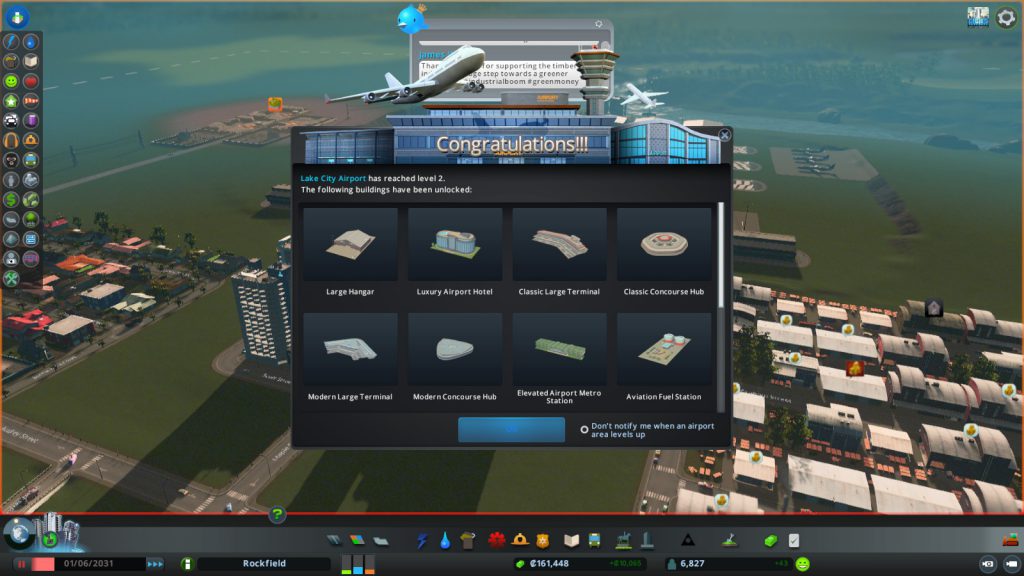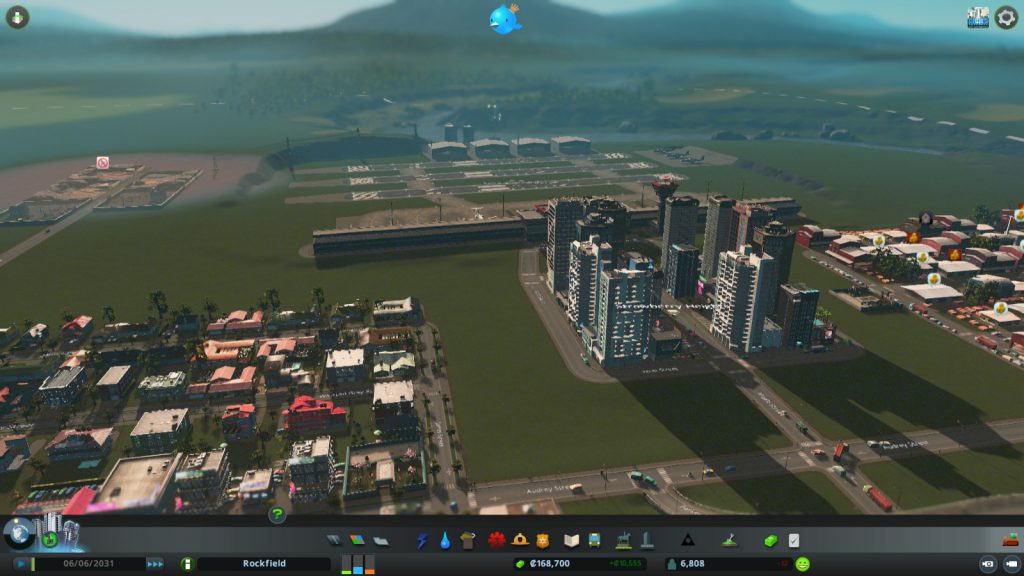Approaching its seventh year Cities: Skylines is still going strong, the latest expansion — Cities: Skylines Airports — adds depth to an area that’s been crying out for a little attention for a while now, and slots in perfectly next to the commercial specialities added with the After Dark expansion.
Cities: Skylines is, without doubt, an amazing game that’s captivated millions over the years. Its been out for a long time now, and so many people who play it now might have forgotten — or simply be unaware of — the perfect storm that surrounded its launch, it arrived in 2015, while Sim City (2013) was still fresh in the memories of city-building fans; In fact, it was apparently the bumpy launch of Sim City which prompted the greenlight for Cities: Skylines. If you didn’t play Sim City then, well, you did miss out a bit, it was a fun idea with lots of cool options, however, its design was structured around EA’s at-the-time obsession with multiplayer. In contrast, in Cities: Skylines you were undeniably alone in your sandbox efforts, there weren’t even SimCity 2000s ‘connections’ where you could run a transport link to the border of your territory and export or import goods with other regions. Maybe that was for the best, the 2013 iteration hammered down so hard on that (and suffered server issues) and that was held against it. But, it’s undeniable that other towns, cities and locations exist outside the world of Cities: Skylines and we might just be seeing the start of that becoming something palpable, or even more core to future gameplay, with Cities: Skylines Airports.
Tourism has been a big mid-late game fixture for a while now, but with Airports you can make it almost fully centre-stage to your city. It takes the depth of Park Life‘s park and nature reserve specialisations and applies it to an area that is entirely based around cargo shipping, making a little extra money or getting tourists in. While we’ve definitely had boats and trains bringing people in from the outside world, and cargo trains taking goods out beyond borders, Airlines makes it feel much more real and it breathes a new lease of life into what can otherwise seem like quite a solitary experience.
The new airport areas are painted onto the map much like other specialisations are. This automatically flattens the land, sucking up or depositing soil. It’s worth mentioning that this point that the ability to bulk sell or buy soil, rather than having to slurp it up while terraforming, is now added in – incredibly useful. While we never learn where we’re selling it to, it feels like the start of something new. Anyway, once you’ve painted an area onto your map you can then add first-level airport components to the zone and start tinkering with the new mechanics.
There are three levels in total, adding a very light, and welcome, progression system to the new Airlines content. Cargo traffic and its hangers are locked to the third and final level, at which point you’ll already have a pretty neat looking airport for your tourists. The first level gives a fantastic sample of what’s on offer, letting you put down terminals, gates and a few decorations. It’s attractiveness and travellers that gate progression, and as the decorations each have resting costs — the same as with the core loop — you can’t simply push ahead with the airport due to increasing background expenditure. In fact, I found that — as I built my first airport as soon as possible — I only had to worry about decorations as I had more than enough visitors coming in through the airport.
Having a dedicated airport area, rather than simply the old airport building, brings a tonne of benefits with it. For a start, land value rockets, and while there are definitely issues in having buildings in close proximity to it, the public transport terminals that come with the expansion make it really easy to run transport networks from the airport and that means that you can use the surrounding areas really strategically. Here’s where my mention of After Dark comes in; Slapping a tourist-centric commercial district near the airport completely opens things up, and massively opens up your route to earn money through tourists early on.
Tourism, people coming from beyond your borders, completely changes how Cities: Skylines plays anyway, but you can now play into that a lot earlier. In addition to that, the level three addition, which lets you build cargo-centric airports, or bolt those onto your existing airports, can very quickly change how your industry works. A big problem in the mid-game is that your experts can quickly outpace your citizens’ consumption, normally you can refocus it, or continue expanding to adapt; Another, and commonly used solution, is to build cargo trains… but, with cargo trains come lots of industrial traffic. Cities: Skylines Airports gives you a potential solution to this because once you’ve unlocked the third level of the airport you can build cargo airlines almost anywhere on the map and use the skies rather than train lines.
The third level also unlocks the chance to create large concourse hubs and, if you wish, design your own airline… a little bit silly, but very fun and… something that — like assigning historical buildings — allows you to have a little bit more ownership over your city. Most importantly, this feels like it could be a gesture toward a future iteration taking critical things like deals and external trading into consideration.
Cities: Skylines Airlines is available now as an expansion for Cities: Skylines on PC, Mac, Linux, Xbox One and PS4.

